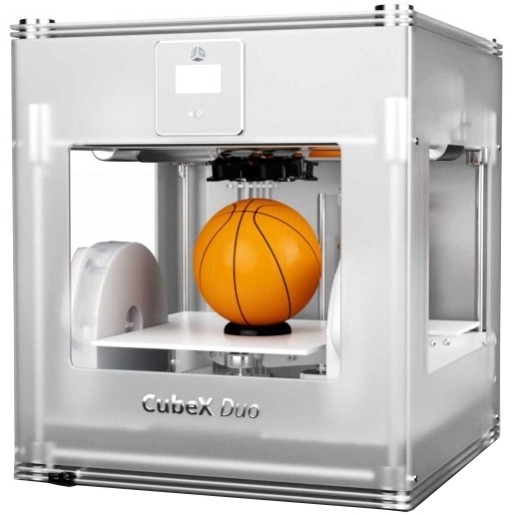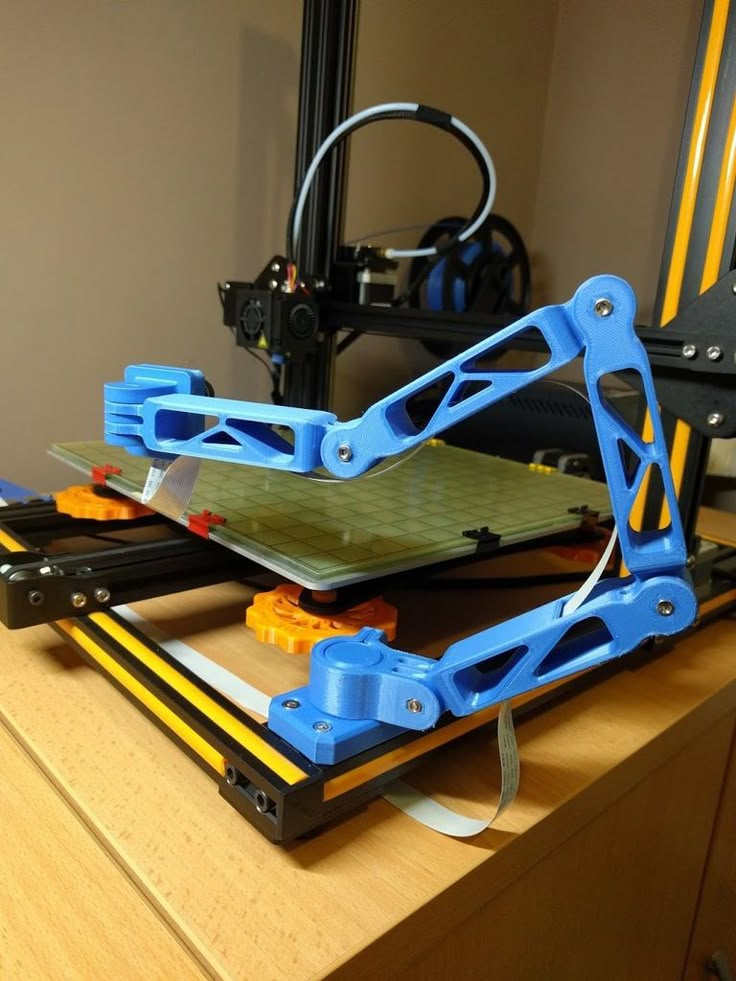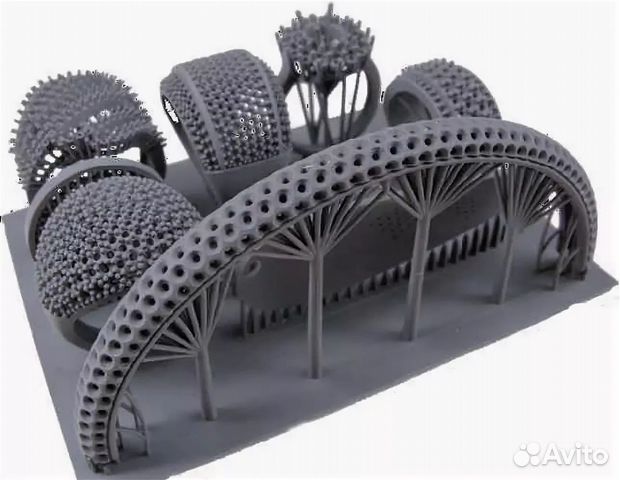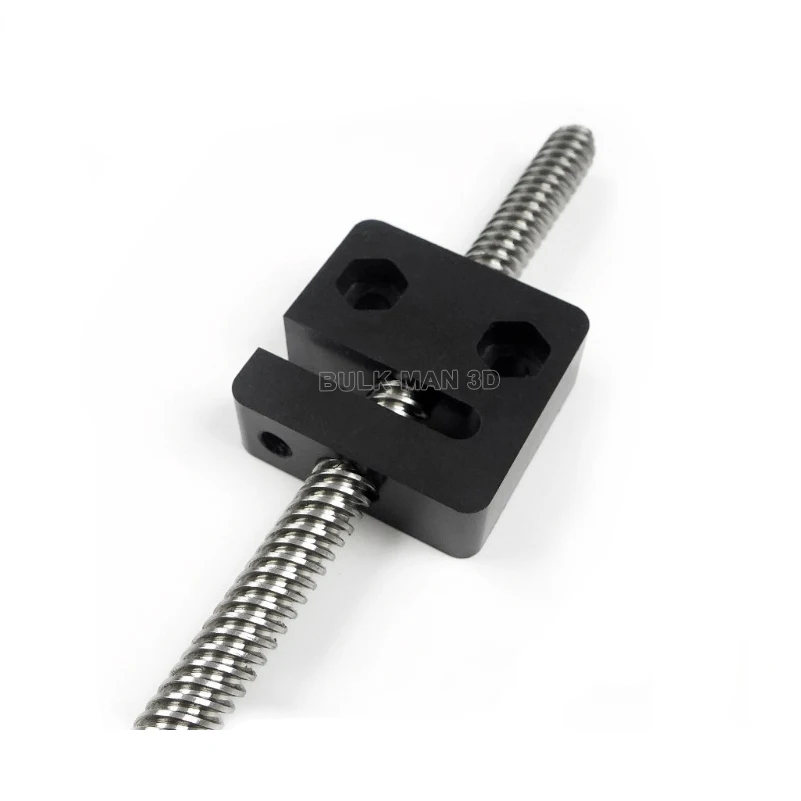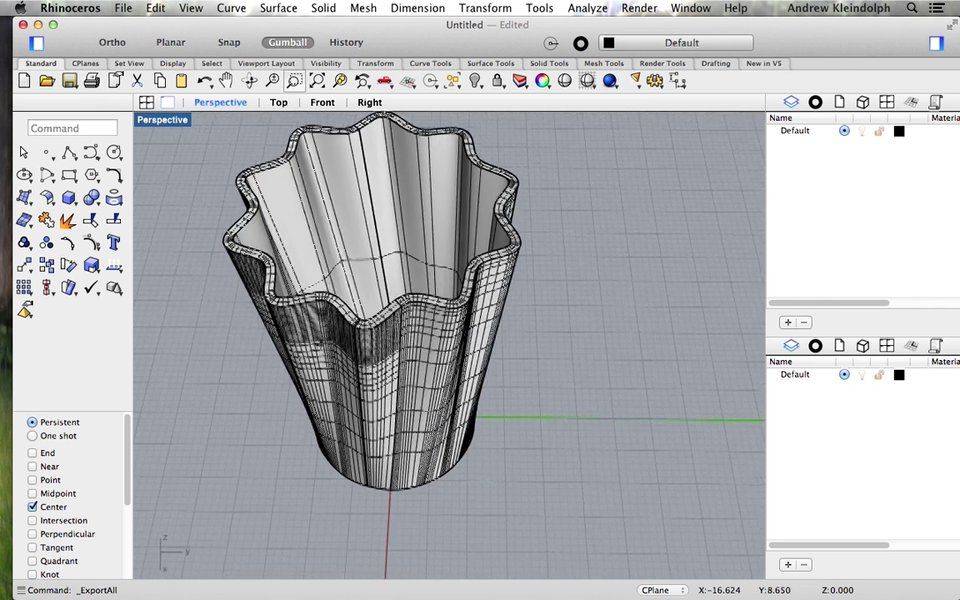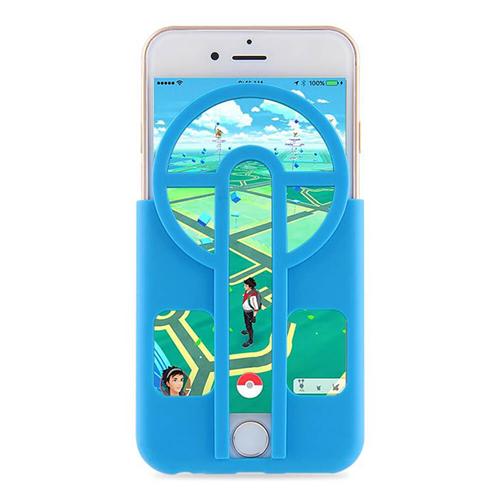Best 3d delta printer
7 Best Delta 3D Printers 2022 in Every Price Range
Named after the delta robots which inspired the RepRap Rostock and Kossel 3D printers, there are a number of small yet key differences between a delta 3D printer and a standard Cartesian FDM 3D printer.
Tall and extremely fast, we explain everything you need to know about delta 3D printers, and the best delta printers we recommend in every price range.
The Best Delta 3D printers and where to buy them
| Name | Max Build Volume (mm) | Speed (mm/s) | Price | Where to buy for best price |
|---|---|---|---|---|
| Monoprice Mini Delta | 110 x 110 x 120 | 150 mm/s | $179 | Amazon here |
| FLSUN Q5 | 200 x 200 x 200 | 150-300 mm/s | $260 | Amazon here |
| He3D K280 Delta | 280 x 280 x 600 | 150 mm/s | $320 | Amazon here |
| FLSUN QQ-S | 255 x 255 x 360 | 300 mm/s | $379 | Amazon here |
| Frankensbox FX-800 | 150 x 150 x 175 | 150 mm/s | $299 | Amazon here |
| Monoprice Delta Pro | 270 x 270 x 300 | 150 mm/s | $699 | Amazon here |
| WASP Delta 2040 PRO Turbo | 200 x 200 x 400 | 500-600 mm/s | $3,400 | Amazon here |
What is a Delta 3D Printer? How does Delta 3D Printing work?
Delta 3D printers are tall and thin; they can easily be told apart from standard Cartesianprinters from their cylindrical build. They use Bowden extruders, and usually have round rather than square print beds, which do not move.
Instead, the extruder above the print bed moves using 3 arms attached to individual posts located every 120 degrees to form a triangle. Though each individual arm can only move up and down on each post, by moving each of these delta arms individually using trigonometric functions the extruder can reach any part of the print bed and move in any direction.
Delta robots like this design inspired the first delta 3D printers.Delta 3D printers are known for their speed. Everything about them is built to be fast — the motors and extruders are fixed around the top and sides of the printer, and the print head is as light as possible to minimize drag and retain accuracy at such high speeds. It is not unusual for a good delta printer to print at 300mm/s, whereas most Cartesian printers average around 60mm/s. They’re a joy to watch at such high speeds and make large prints far more bearable.
How much does a Delta 3D printer cost?
Cheap Delta 3D printers can start at just a couple of hundred dollars, with cost savings if you’re willing to build the printer yourself. The lowest price printer we recommend is under $200.
For a delta 3D printer that prints faster, more accurately and more reliably, you can spend a few hundred dollars up to a few thousand depending on your preferences.
The 3 arms on a delta 3D printer can be seen here. They influence the movement of these very accurate 3D printers.Delta 3D Printer Pros and Cons & Comparison vs Cartesian 3D Printers
Advantages of a delta 3D printer
- Extremely fast — even the cheapest delta 3D printer is twice as fast as most Cartesian printers. Cartesian printers are heavier and risk printing inaccurately by ‘overshooting’ the STL file dimensions if they try to print too fast, resulting from the momentum required to move the heavier printer parts.
- Large build volume 3D printing — delta printers can usually print very tall structures.

- Hypnotic print style — the speed and style of a delta print makes it almost a hypnotic experience. Not a technical advantage, but an aesthetic one.
Disadvantages of a delta 3D printer
- Smaller community of users — there are less users of delta printers so those facing problems may have more difficulty finding solutions. There are however facebook groups and forums for specific delta 3D printer owners to share information and help each other.
- Higher learning curve — many DIY delta 3D printers can take many hours to assemble and require previous electronics or 3D printing experience. Delta printers are generally known for being more for experts than beginners. We have however listed pre-assembled delta 3D printers in our ranking as well for those less confident in their DIY skills.
3DSourced is reader-supported. When you buy through links on our site, we may earn an affiliate commission.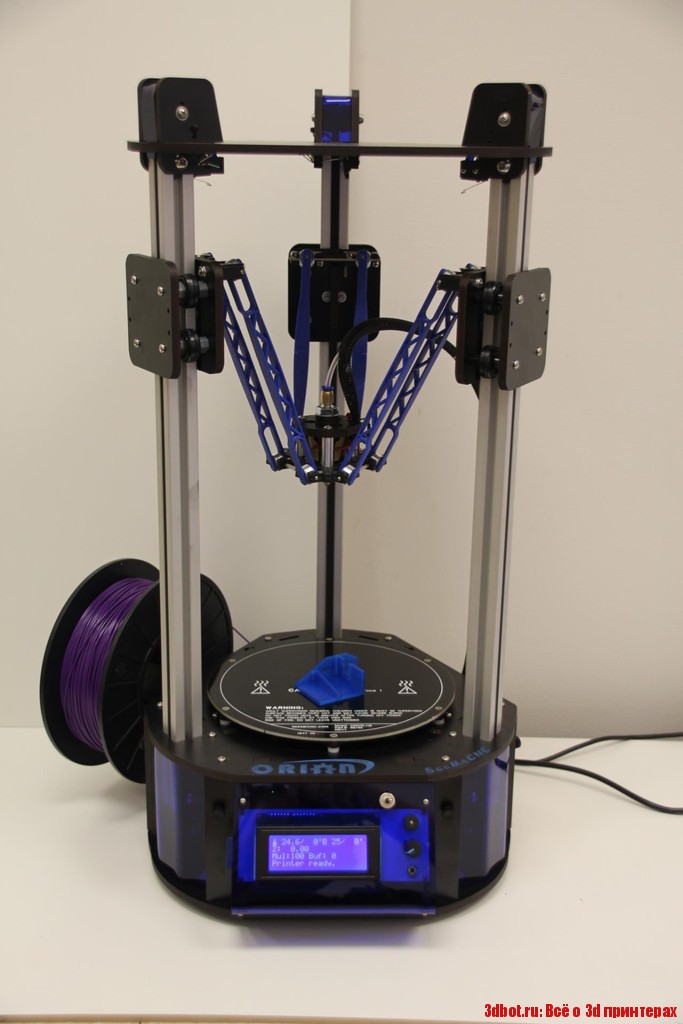 Learn more
Learn more
Best Delta 3D Printer
1. Monoprice Mini Delta
- Delta 3D printer price: $179 — Available on Amazon here
- Maximum print volume: 110 x 110 x 120 mm
- Speed: up to 150 mm/s
- Weight: 1.8kg
Monoprice make some of the best budget 3D printers around, with the Monoprice Mini Delta no exception. Despite the low price, the Mini Delta features a solid steel and aluminium frame to retain stability and durability. Additionally, the heated bed means you can print ABS and PLA — though beginners to 3D printing will probably most enjoy the fact that the Mini Delta comes fully assembled and doesn’t require any DIY skill.
Incredibly, the Monoprice Mini Delta can print at 50 micron layer resolutions, fantastic for such a low price printer. The printer calibrates itself you don’t need to, and you can print remotely via WiFi, as well as by USB or SD card.
However, the print speed isn’t as fast as some delta 3D printers in higher price ranges.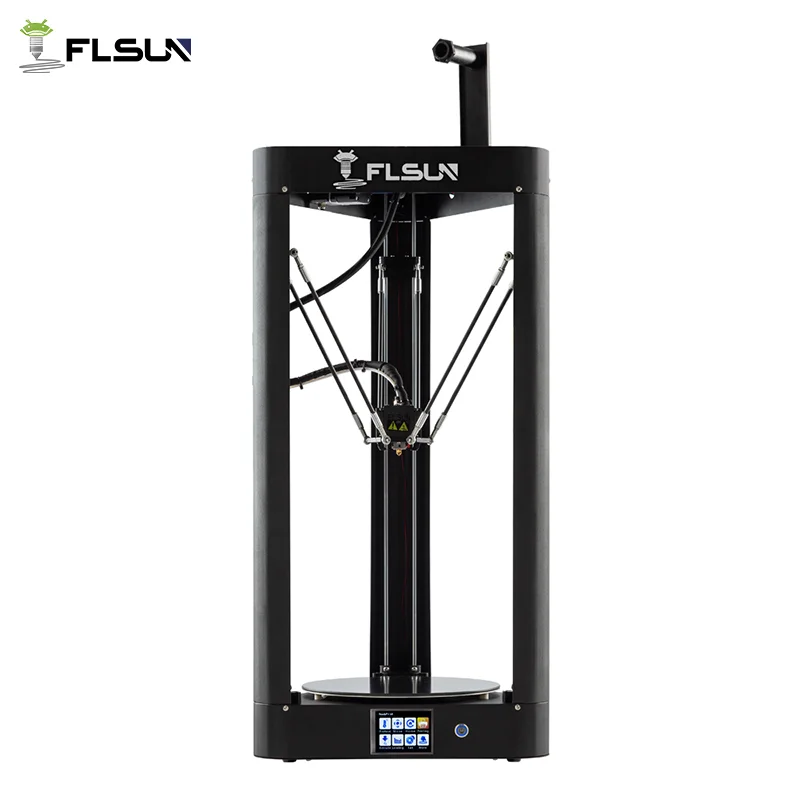 Though the 150 mm/s speed is still far faster than most FDM 3D printers, for a delta printer this is still mediocre. It is easy to use, comes assembled, and compatible with Cura or Repetier-Host 3D slicers, so for a cheap delta 3D printer it’s a great choice.
Though the 150 mm/s speed is still far faster than most FDM 3D printers, for a delta printer this is still mediocre. It is easy to use, comes assembled, and compatible with Cura or Repetier-Host 3D slicers, so for a cheap delta 3D printer it’s a great choice.
2. FLSUN Q5
- Price: $260 — Available on Amazon here
- Maximum print area: 200 x 200 x 200 mm
- Speed: up to 300mm/s (recommended around 150mm/s)
- Weight: 6.5kg
The lower price version of the highly rated FLSUN QQ-S, the FLSUN Q5 is one of the best delta 3D printers around. It still features a solid metal structure for stability, still has the easy-to-use touchscreen, and can still print up to 300mm/s.
One of the key differences between the QQ-S (apart from being $100 cheaper) is the smaller print volume: 200 x 200 x 200 mm. This is still large enough for most prints, but those looking for a large 3D printer may prefer the QQ-S or another delta 3D printer we recommend. It’s easy to assemble, prints almost all the standard FDM filaments, and has a power resume function that can save you so much stress in the event of a power outage.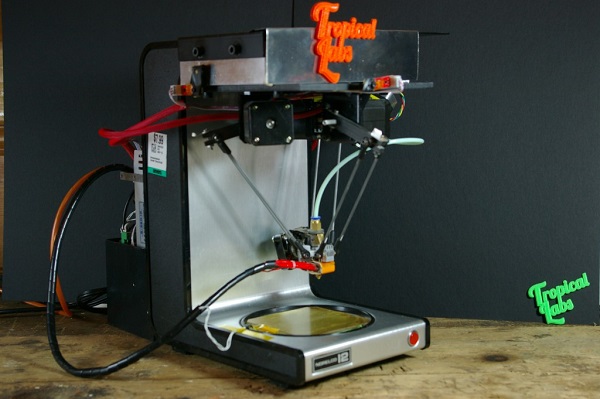
It’s not quite as accurate as some of the printers on this list, but for a low cost 3D printer that can print quickly and with reasonable accuracy, it’s a great choice.
3. He3D K280 Delta — Huge delta 3D printer
- Price: $329 — Available on Amazon here
- Maximum build area: 280 x 280 x 600 mm
- Delta 3D printer print speed: 150 mm/s
- Weight: 10.5kg
The He3D K280 Delta is a truly massive 3D printer. You’ll need to assemble it yourself, but when you have, this beast prints taller parts than almost any other 3D printer in the world.
The frame is made of solid aluminium and steel, and prints a wide variety of filaments including Wood filaments, Nylon, TPU, HIPS, Flexible PLA as well as standard PLA and ABS. It’s compatible with Repetier-Host and like the Monoprice Mini Delta can print with a very impressive minimum 50-micron layer resolution. Like the Mini Delta you can also print over WiFi, or with a USB or SD card.
The reason you get so much printing volume for such a low price is that you do need to build it yourself.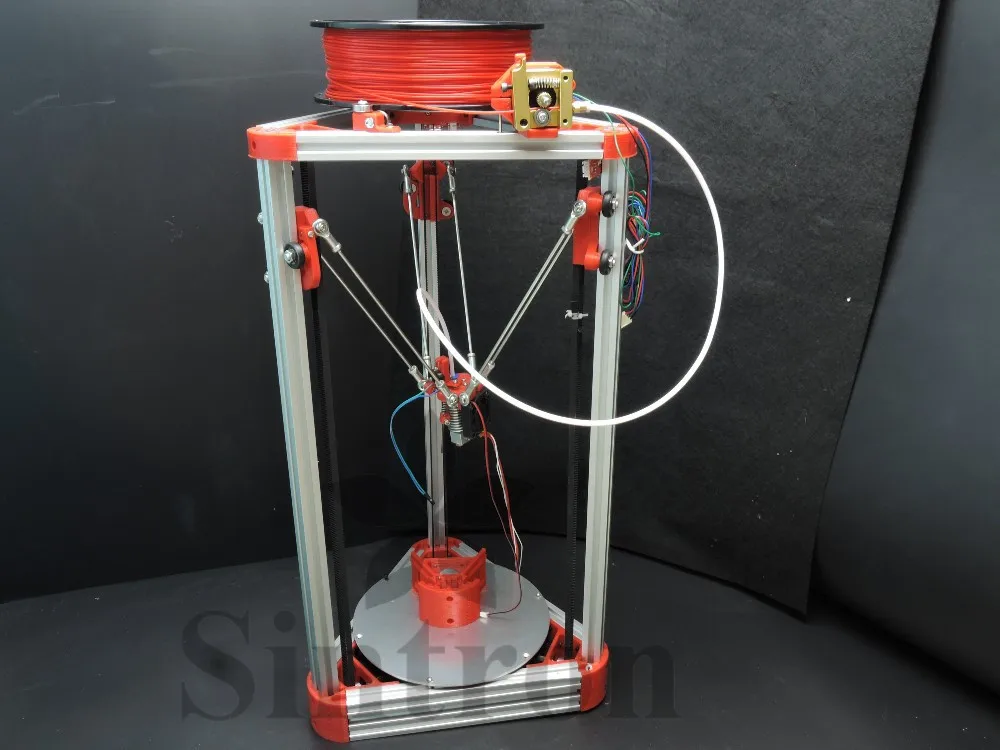 Some Amazon reviewers have highlighted difficulties with some of the screws during the build process, but fairly simple fixes have been found. There is an active Facebook group for the K280 Delta if you do run into problems, which you can find here.
Some Amazon reviewers have highlighted difficulties with some of the screws during the build process, but fairly simple fixes have been found. There is an active Facebook group for the K280 Delta if you do run into problems, which you can find here.
If you’re a beginner or not as confident with your making skills, go for the FLSUN QQ-S (or Mini Delta if you want to save money), but if you’ve got the skills you can reap the print size benefits with the He3D K280 Delta. Oh, and they also make a really neat 3D scanner.
4. FLSUN QQ-S
- Delta 3D printer cost: $379 — Available on Amazon here
- Max print volume: 255 x 255 x 360 mm
- Speed: up to 300 mm/s
- Weight: 12.5kg
We recommend the FLSUN QQ-S highly as one of the best budget delta 3D printers around. It comes 90% assembled (the last few steps take around 20 mins to complete), comes with a 3.2 inch touchscreen, and can level itself.
- We were lucky enough to be sent a FLSUN QQ-S to test and review.
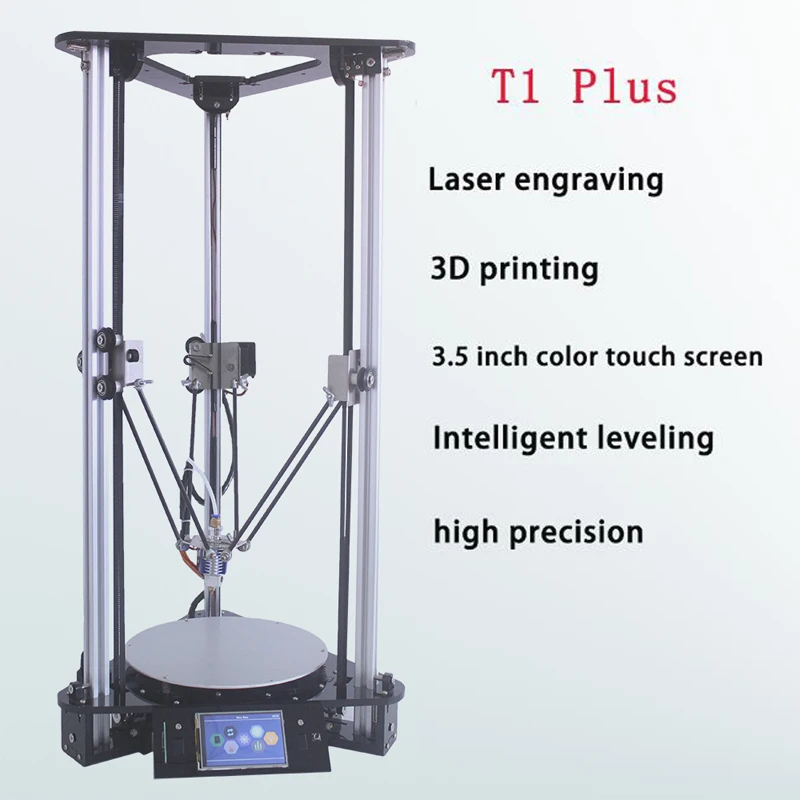 Check out our FLSUN QQ-S review!
Check out our FLSUN QQ-S review!
Influenced by the RepRap Kossel and in true delta 3D printer style, the FLSUN QQ-S has both a large printing area and fantastic print speed, able to print up to 300 mm/s. It can print PLA, ABS, HIPS, PVA, wood-filled filaments, and its heavy metal frame keeps the printer stable during printing.
Another feature that improves your 3D printing experience is the lattice platform bed, designed to make it as simple as possible to remove prints after printing has finished, as well as maintain temperatures to reduce warping. And it does all this while remaining under 50dB, one of the quietest 3D printers around! It’s very highly rated as one of the best 3D printers in its price range.
5. Frankensbox FX-800 — Best Delta 3D printer for Beginners
- Delta 3D printer price: $299 — Available on Amazon here
- Max print volume: 150 x 150 x 175 mm
- Speed: up to 150 mm/s
- Weight: 10kg
The Frankensbox FX-800 is a compact delta printer, printing smaller sizes than the FLSUN QQ-S Delta and also able to print at noises under 50 dB.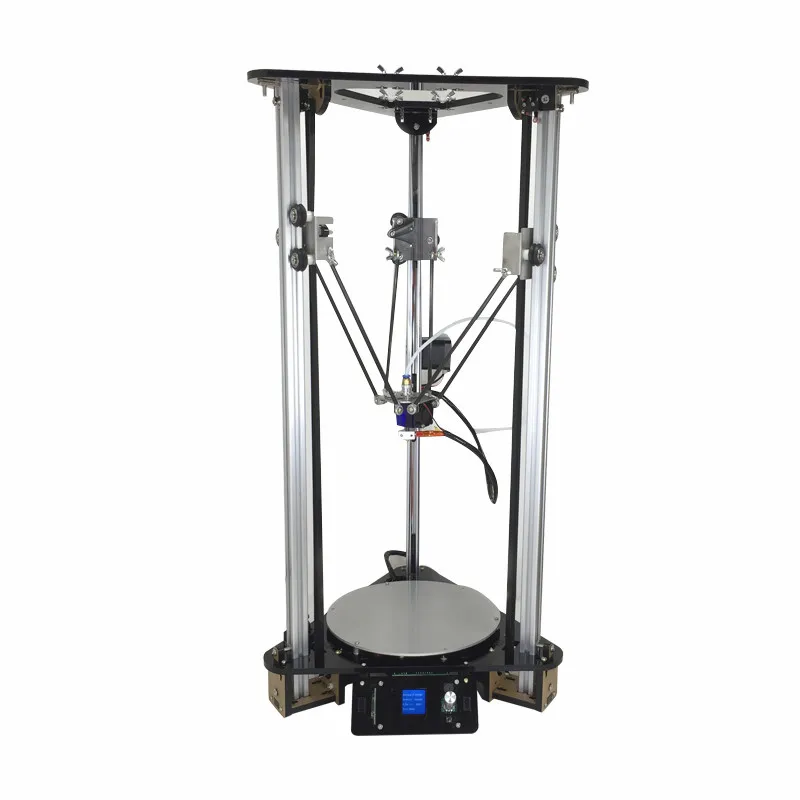
Like the FLSUN QQ-S it comes assembled — fully, rather than 90% — and is designed for those who value convenience. It’s the perfect delta 3D printer for those that want to just plug it in, set up the 3D printer software, and run it straight away. The FX-800 can print with resolutions of up to 100 microns, features one button leveling, and can print remotely via WiFi, SD card or USB stick.
With a max speed of 150 mm/s, it isn’t as fast as the FLSUN QQ-S, but sells itself on convenience. You get a 1-year warranty with your purchase so you’re insured against any problems, and if you have any issues with your FX-800, Frankensbox have US-based customer support to help you find a solution.
6. Monoprice Delta Pro
- Price: $699 — Available on Amazon here
- Maximum print area: 270 x 270 x 300 mm
- Speed: up to 150mm/s
The premium and upgraded version of the cheaper Mini Delta, the Delta Pro has a much larger build area, can auto level, and features full metal parts for stable printing unaffected by vibrations.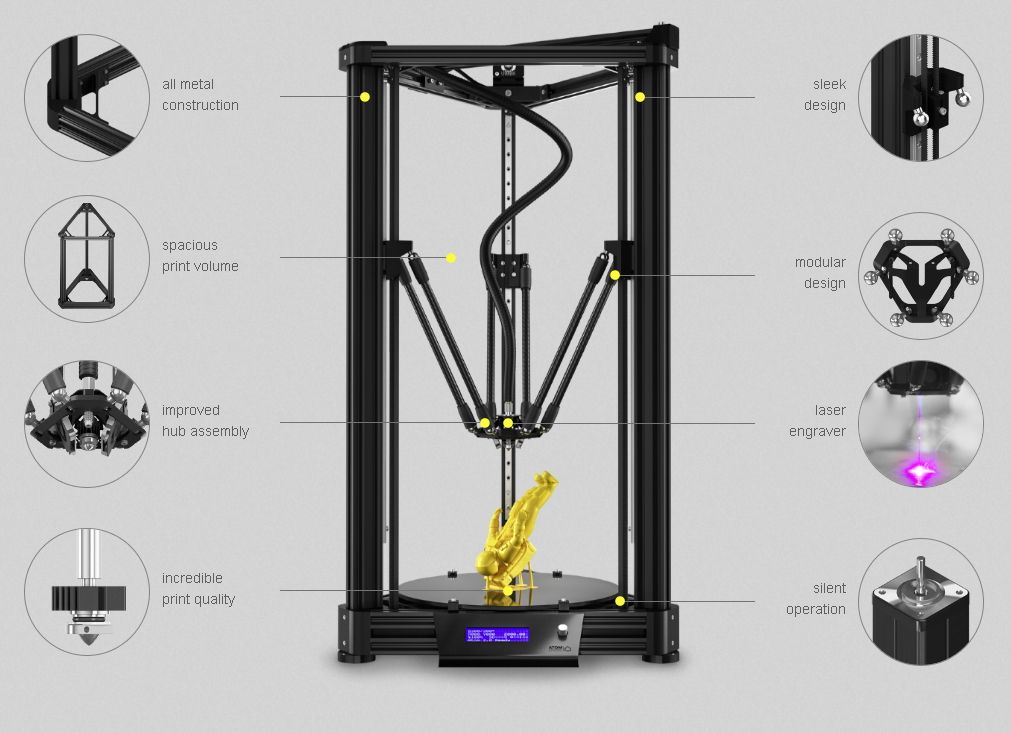
It comes with all the features you’d expect: a sensor for detecting when filament is low to avoid ruining prints; and a glass print bed for good adhesion and easy print removal.
The Delta Pro is compatible with all common filaments, like PLA, ABS, PETG and wood filaments, as well as tougher filaments like Nylon, and metal-filled materials. It’s accurate, with up to 50-micron layer resolutions, and prints up to 150mm/s.
Overall, it’s one of the best delta 3D printers under $1,000.
7. WASP 2040 PRO Turbo — Fastest Delta 3D printer in the world!
- Price: $3,400 — Available on Amazon here
- Max print volume: 200 x 200 x 400 mm
- Speed: up to 500-600 mm/s
- Weight: 25kg
Italian 3D printer company WASP not only make great delta 3D printers but have also made great contributions to 3D printed houses. They claim that the WASP 2040 Pro Turbo is the fastest 3D printer in the world, with a maximum print speed of 600mm/s, 10x the speed of some Cartesian printers! It’s popular with busy makers who value the speed, and small businesses looking to make fast plastic prototypes.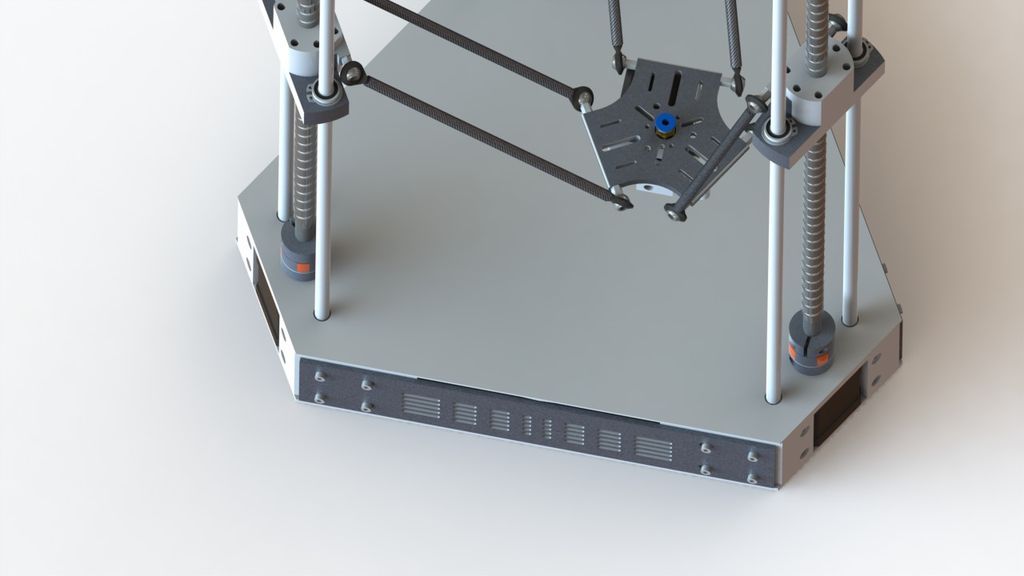
Everything is optimized for speed, but that doesn’t mean anything is sacrificed. The WASP 2040 PRO can still print with great accuracy — up to 50 microns — and with good stability from the strong aluminium frame for crisp looking finished prints. It can also fully calibrate itself with its auto calibration system.
Quality of life features include the ability to resume at the exact point on the exact layer where printing was paused or stopped — for example in the event of a power outage. This is an underrated benefit; we all have a horror story of a 40 hour print that was ruined because a random circumstance caused a print error with just a few hours to go, having to start all over again. But not with the WASP. The filament detector also informs you and stops printing when you run out so that prints never fail.
The WASP 2040 PRO Turbo can print a variety of 3D printer filaments, including PLA, PETG, ABS, PA, Carbon, and can be upgraded if you buy the clay extruder add-on for 3D printing clay.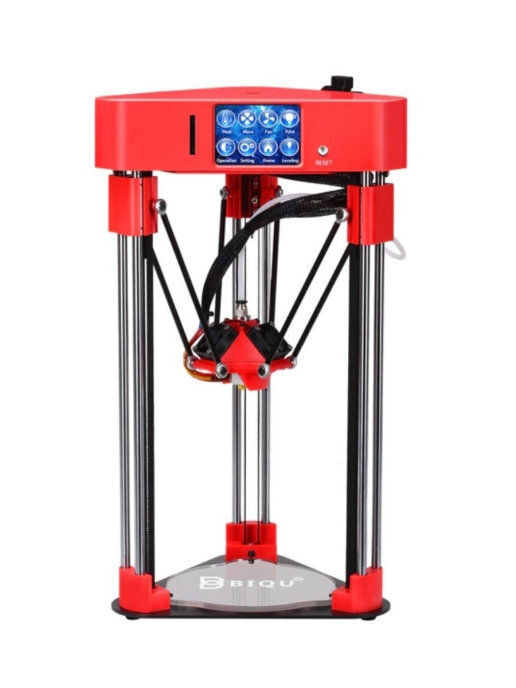 You can use the WASP with Cura, Slic3r or Simplify3D for slicing, and know that the printer is fast, effective and reliable. Undoubtedly one of the best delta 3D printers around, it just becomes a question of money as the WASP is noticeably more pricey than some lower priced delta printers we recommend.
You can use the WASP with Cura, Slic3r or Simplify3D for slicing, and know that the printer is fast, effective and reliable. Undoubtedly one of the best delta 3D printers around, it just becomes a question of money as the WASP is noticeably more pricey than some lower priced delta printers we recommend.
6 Best Delta 3D Printers (2022 Update)
- Last Updated: December 8, 2022
- Pat Nathaniel
If you want a faster version of 3D printing that is insanely fun to watch, delta 3D printing is the only option.
We’ve researched 17 different delta printers and selected the top 6 to make sure you’re not wasting hundreds of dollars on a clunker.
Let’s dive into some of the best delta 3D printers on the market and how to pick the right one for you.
Monoprice Mini Delta V2
Build volume: 110 x 110 x 120 mm
Check Latest Price
FLSUN Super Racer (SR)
Build volume: 260 x 260 x 330 mm
Get Discount
Check Latest Price
Delta Wasp 2040 PRO
Build volume: 200 x 200 x 400 mm
Check Latest Price
Table of Contents
- Best Delta 3D Printers At A Glance
- 1.
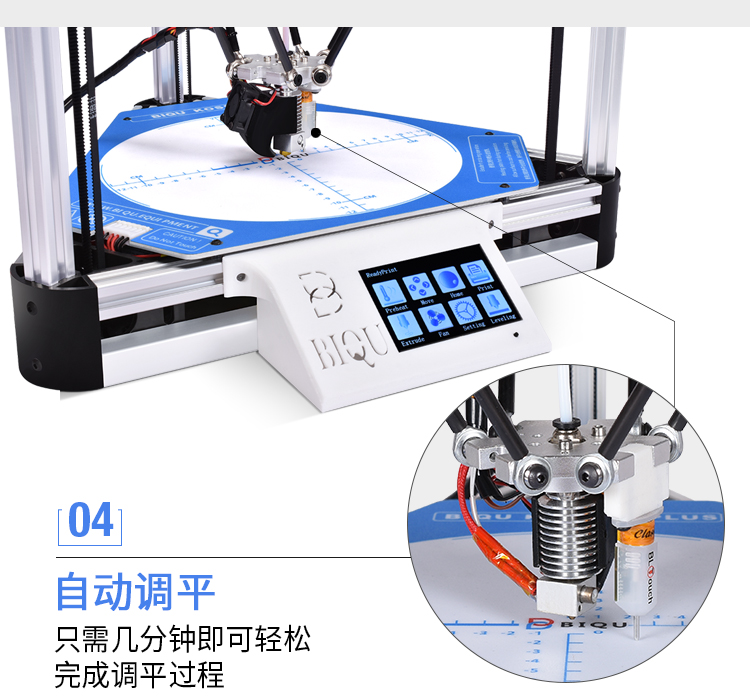 Monoprice Mini Delta V2 (Best Value)
Monoprice Mini Delta V2 (Best Value) - 2. FLSUN Super Racer (SR) (Best Choice)
- 3. Delta WASP 2040 PRO (Premium Choice)
- 4. FLSUN QQ-S Pro (Easy to Use)
- 5. HE3D K280 Delta DIY (Best for Beginner to Advanced Users)
- 6. SeeMeCNC Rostock MAX V4 (Industrial Grade)
- 1.
- What is a Delta 3D Printer?
- How Does a Delta 3D Printer Work?
- Pros of Delta 3D Printers
- Speed
- Height of Prints
- Cons of Delta 3D Printers
- Community is Smaller
- More Difficult to Learn and Troubleshoot
- Less Available Units on the Market
- How to Choose the Right Delta 3D Printer
- Build Volume
- Cost
- Accuracy, Precision, and Reliability
- Features
- Delta 3D Printer VS CoreXY 3D Printer
- Conclusion
Best Delta 3D Printers At A Glance
When choosing a delta 3D printer keep in mind the different features you’re looking for.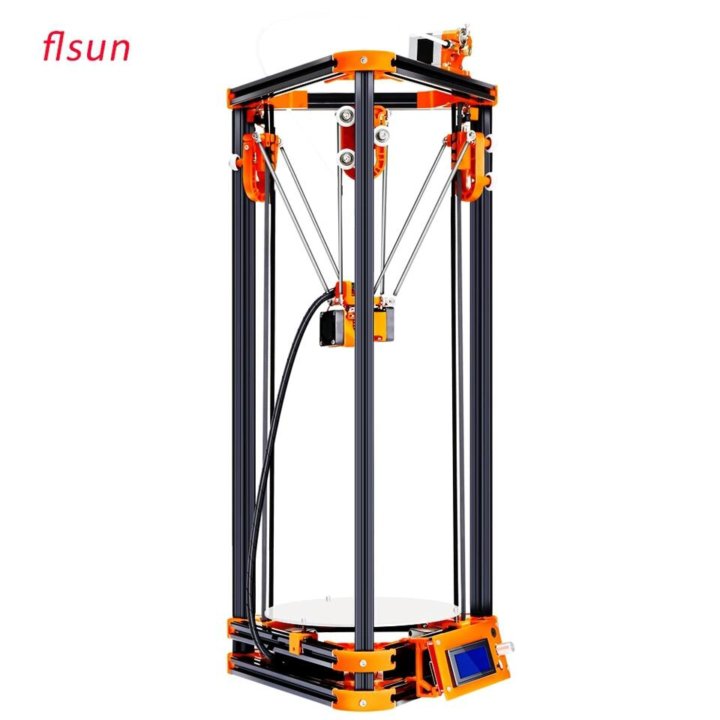 The 3D printers outlined below excel in different categories:
The 3D printers outlined below excel in different categories:
1. Monoprice Mini Delta V2 (Best Value)
2. FLSUN Super Racer (SR) (Best Choice)
3. Delta WASP 2040 PRO (Premium Choice)
4. FLSUN QQ-S Pro (Easy to Use)
5. HE3D K280 Delta DIY (Best for Beginner to Advanced Users)
6. SeeMeCNC Rostock MAX V4 (Industrial Grade)
1. Monoprice Mini Delta V2 (Best Value)
3D Printer Type: FFF | Materials: PLA | Build Volume: 110 x 110 x 120 mm | Layer Resolution: 50 microns
The first iteration of Monoprice’s Mini Delta was already a great deal. So is its successor, Mini Delta V2 — but it’s gotten better.
The original Mini Delta had some issues with its automatic bed leveling, Wi-Fi module, and other features. I’m happy to tell you that Monoprice has listened to user feedback.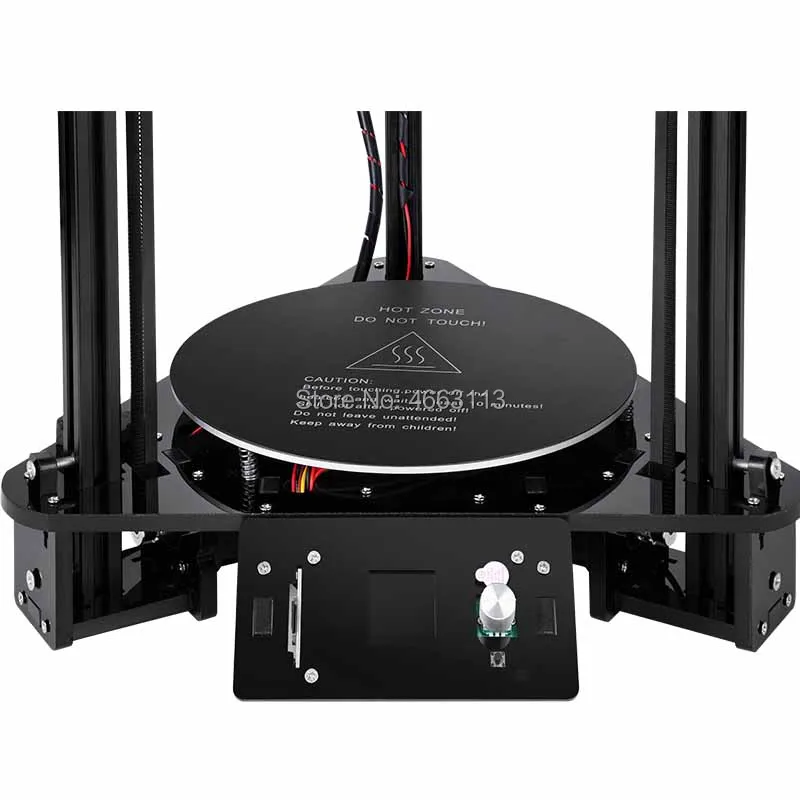
Mini Delta V2 is easier to operate with a revamped touchscreen and integrated Wi-Fi connectivity. It’s ready to go pretty much out of the box, so you’ll be printing in no time.
The familiar sturdy metal construction reduces vibrations. Thanks to the improved bed leveling, you can expect slightly better print quality than with the previous version.
Of course, not everything will be perfect at such a low cost. The print speed and volume are both pretty unimpressive. Additionally, due to the low-temp bed, you’re basically restricted to printing with PLA only.
But if you’re looking for a very budget-friendly delta 3D printer, you’ve found it.
- Extremely affordable
- Decent print quality
- Auto-leveling
- Wi-Fi connectivity
- Easy to set up
- Sturdy construction
- Small print volume
- Slow printing for a delta machine
- Prints only with PLA
Check Latest Price
2.
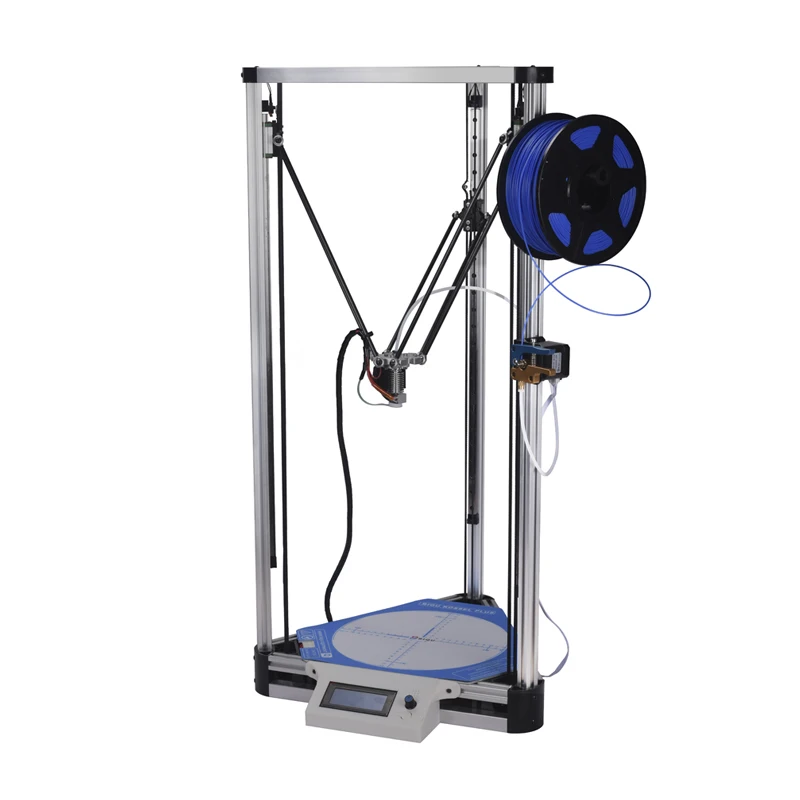 FLSUN Super Racer (SR) (Best Choice)
FLSUN Super Racer (SR) (Best Choice) 3D Printer Type: FDM | Materials: PLA, ABS, PETG & Flexibles | Build Volume: 260 x 260 x 330 mm | Layer Resolution: 50 microns
If you’re ever going to buy just one delta 3D printer, stop what you’re doing. Go and get the FLSUN Super Racer.
The Super Racer simply puts everything good about delta 3D printers in one package.
That machine isn’t called Super Raced for nothing. It can reach ridiculously fast print speeds of 200 mm/s. You might expect the print quality to become garbage at those speeds, but this beast still manages to produce decent prints.
And if you settle for a lower speed, the prints come out with great details. Super Racer also has a generously-sized build chamber so you can print big components fast.
As a stroke of genius, the touchscreen has a stretchy cable and attaches to the printer frame with a magnet.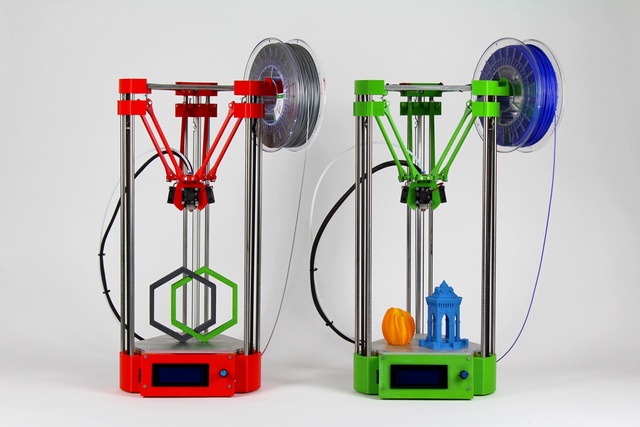 No more straining your back while hunching over the machine.
No more straining your back while hunching over the machine.
Setup takes only about 15 minutes or less and Super Racer has automated bed leveling. You can get to printing quickly. But you may have to tweak your settings carefully to get the optimal speed/quality ratio.
It’s well worth your time to do so, though. FLsun Super Racer is simply a great delta 3D printer.
(NOTE: Some older Super Racer machines will need a firmware update to activate the USB slot. For some inconceivable reason it used to be disabled by default.)
- Blistering speed
- Good print quality
- Detachable touchscreen
- Works practically out of the box
- Automated leveling
- Good value
- Large print volume
- Needs carefully tuned settings
- Hot end could get hotter
- May need firmware updates to activate the USB slot
Click Here For Official Website
Check Latest Price
3.
 Delta WASP 2040 PRO (Premium Choice)
Delta WASP 2040 PRO (Premium Choice) 3D Printer Type: FDM | Materials: PLA, PETG, ABS & PA Carbon | Build Volume: 200 x 200 x 400 mm | Layer Resolution: 50 microns
If you want to see some real speed, you need to check out the 2040 PRO by WASP. Float like a butterfly, print like a WASP.
WASP claims that this printer is the fastest 3D printer in the world. It achieves speeds up to 500 mm/s and makes it look easy. Despite printing fast, it also prints accurately. The aluminum frame keeps everything sturdy while the head zips around.
The bed automatically levels itself and heats up to allow for different filament materials to be printed onto it.
You can pause or stop a print and then resume where you left off. It also stops printing when it notices you’re out of filament.
This machine is also super reliable.
- Pause and resume print
- Automatic filament detection
- Auto-leveling bed
- Reliable, high quality, highly accurate
- Super-fast
- Sturdy frame
- Very expensive
- Side-fed filament spool
Check Latest Price
4.
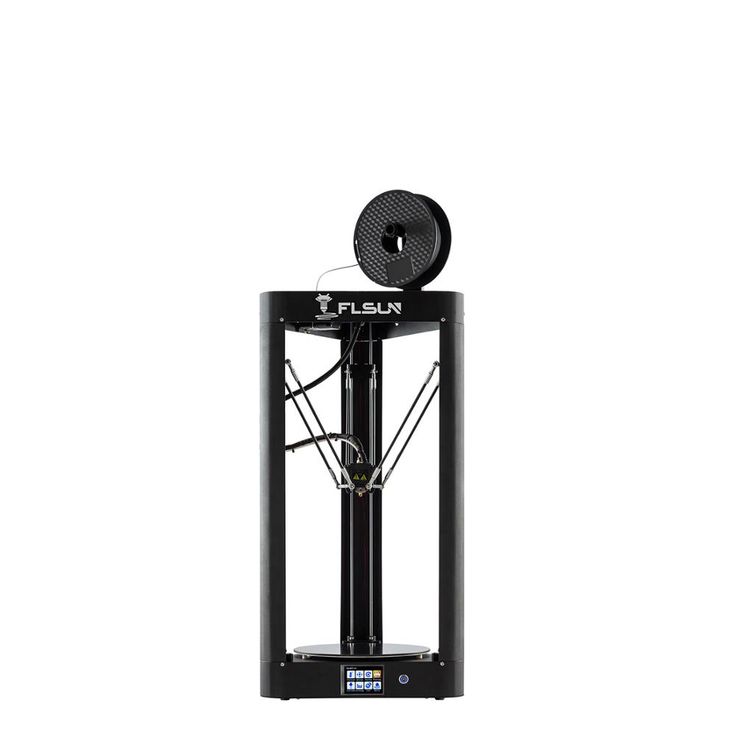 FLSUN QQ-S Pro (Easy to Use)
FLSUN QQ-S Pro (Easy to Use) 3D Printer Type: FDM | Materials: PLA, ABS, HIPS, Wood, PVA & Flexibles | Build Volume: 255 x 255 x 360 mm | Layer Resolution: 50 microns
Sometimes you don’t feel like messing with your printer for hours to get good results — you just want to print. Sound familiar? If so, FLSUN QQ-S Pro makes delta 3D printing easy as pie.
The ease of use begins immediately at assembly. There is no assembly. QQ-S Pro comes carefully pre-built and ready to print.
If you really want to do some DIY setup, lube the rods and rails. That takes the already great smoothness and accuracy to a whole new level.
Things don’t get any more difficult after setup, either.
QQ-S Pro has an excellent auto-leveling function that works like a dream and keeps the bed leveled for a long time. The touchscreen and UI are clear and well-designed. The only complaint I have is that the screen doesn’t detach like with the Super Racer.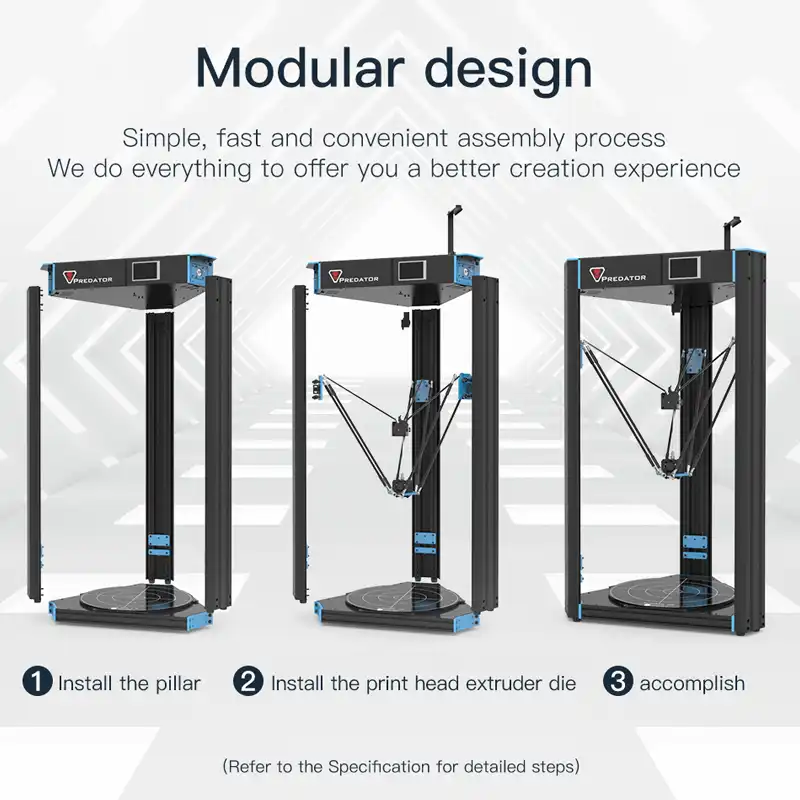
So the price for the simple usability is poor print quality, right?
Not by a long shot. You can effortlessly fill the well-sized print volume with high-quality prints.
FLsun QQ-S Pro is the machine you need if you just want to print without worries.
- Simple to set up and use
- Good print quality
- Well-sized print volume
- Quiet operation
- Wi-Fi connectivity
- Affordable
- Auto-resume and filament runout sensors
- A large machine
- Build plate is not removable
- Some parts are difficult to replace if damaged
Click Here For Official Website
Check Latest Price
5.
 HE3D K280 Delta DIY (Best for Beginner to Advanced Users)
HE3D K280 Delta DIY (Best for Beginner to Advanced Users) 3D Printer Type: FDM | Materials: PLA, Flexible PLA, ABS, Wood, HIPS & Nylon | Build Volume: 280 x 280 x 600 mm | Layer Resolution: 50 microns
How does a delta 3D printer that grows with your skill level sound? Pretty good, right? That’s what the HE3D K280 Delta kit does.
This DIY kit does require assembly, so it may not be perfect for your first printer. But once you get it set up, it will do a good job as is. But to get the printer to really shine, you’ll have to tweak the settings and parts.
That’s not necessarily a bad thing — you can customize the machine as you go along and really make it your own.
K280 Delta is also your go-to if you want to print some humongous parts. The diameter is alright, but the maximum part height is a ridiculous 600 mm.
This machine can’t match some others — like the FLsun printers — in detail quality. But sheer size has a quality of its own.
But sheer size has a quality of its own.
The default components include a heated bed, so can print with both PLA and ABS. With the large print size, a filament runout sensor and print resume functionality would be welcome, but unfortunately don’t exist.
All in all, HE3D K280 Delta DIY is a good kit for those looking for a 3D printing challenge that you can tweak to your heart’s content.
- Huge print volume
- Great base for customization and upgrades
- Works with PLA and ABS
- Active online community
- Wi-Fi connectivity
- Difficult assembly
- Some default components are so-so in quality
- Mediocre print quality
- No runout sensor or print resume features
Check Latest Price
6.
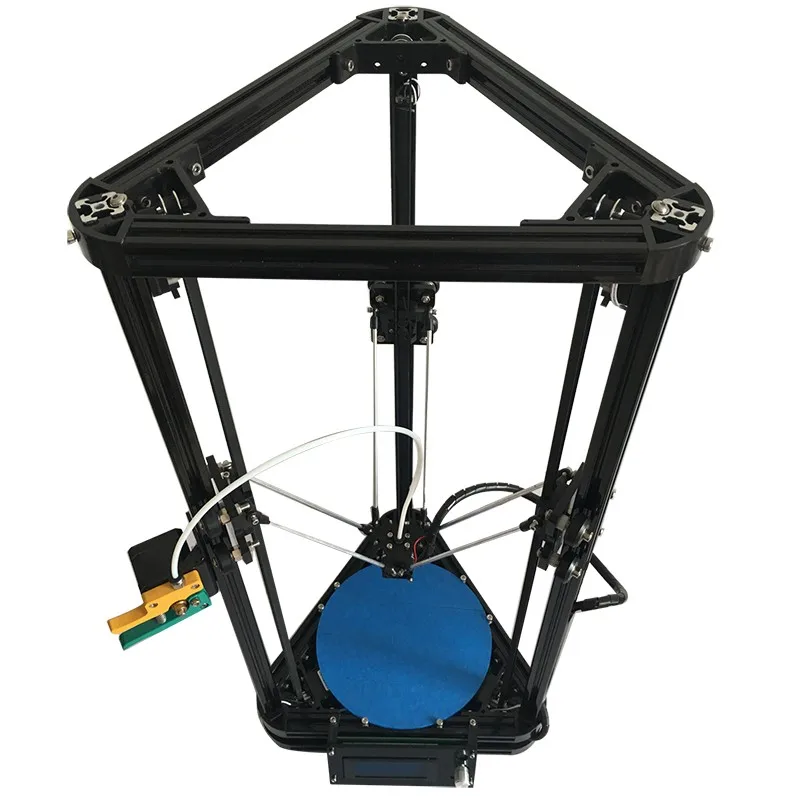 SeeMeCNC Rostock MAX V4 (Industrial Grade)
SeeMeCNC Rostock MAX V4 (Industrial Grade) 3D Printer Type: FDM | Materials: PLA, ABS & Other Materials | Build Volume: 280 x 280 x 350 mm | Layer Resolution: 50 microns
The Rostock MAX V4 from SeeMeCNC is a very serious machine. This is the more professional-grade delta printer that has all of the bells and whistles you would expect on a machine over $1,000.
The first thing to mention is how insanely accurate this machine is. The Rostock can achieve amazing print quality and reliability. It does this in a massive build volume, seemingly dwarfing every cartesian 3D printer in its area.
The printer comes fully assembled. And there’s also an additional upgrade for multi-color printing available for this unit.
Another benefit is the printer can be operated wirelessly so you can start a print remotely. The bed also levels itself, so there’s less guesswork upfront before printing.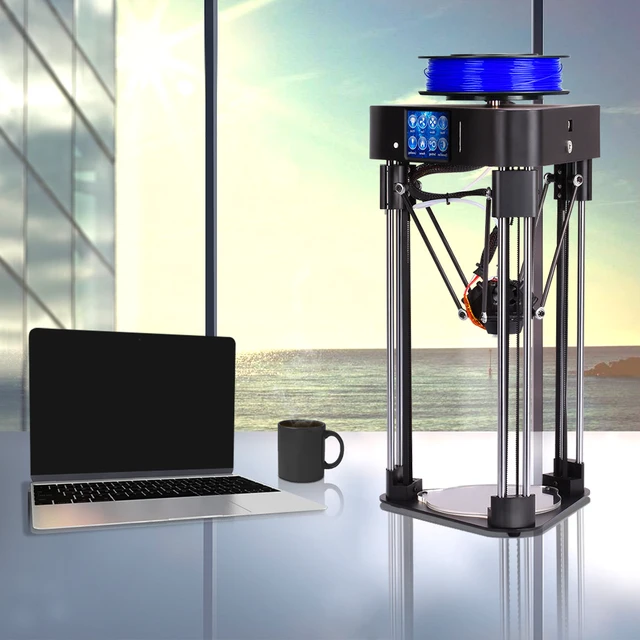
What we didn’t like was the speed left a lot to be desired so it’s no surprise this printer is one of the slowest on this list – but the machine makes up for this in almost every other category.
On top of it all, this delta printer utilized super robust materials for its framework. Overall this machine is beautiful, performs exceptionally, and has a giant build
- Huge build volume
- Up-gradable extruder head
- Wireless printing
- High precision
- High-accuracy prints
- Very reliable
- Price is reasonable for what it delivers
- Can print most filament materials
- Unit is slow
- Machine is a bit bulky
Check Latest Price
What is a Delta 3D Printer?
A delta 3D printer is a different type of motion than your standard 3D printer. You’ve probably seen the 3D printers that move side to side then up and down. Those are called Cartesian 3D printers. Flashback to high school math class!
You’ve probably seen the 3D printers that move side to side then up and down. Those are called Cartesian 3D printers. Flashback to high school math class!
Unlike these Cartesian printers, delta printers are typically cylindrical looking. This means that their build plates are sometimes circular, but they’re usually thinner and taller than standard 3D printers.
How Does a Delta 3D Printer Work?
Delta 3D printers work using some physics and engineering. The print head is still at the top of the machine, but instead of a single rod or rail guiding the head up and down, there are a ton of rods. Each printer might opt for different orientations of the rods, but you’ll notice them move up and down and around while the print is going on.
The filament is still fed to the nozzle, and there are still motors that drive the filament and the head around. The only real difference is how the machine moves, the actual operation is identical. What are the pros and cons of delta 3D printers?
Pros of Delta 3D Printers
There are a number of reasons why someone might choose to use a delta 3D printer.
Speed
The biggest advantage of delta printers is how much faster they are. In fact, some delta printers are more than 10 times faster than cartesian 3D printers. Standard cartesian printers are way slower than a delta printers. Cartesian printers are heavier, so their momentum can swing and ruin a print.
This means that those printers have to move slower to be careful and preserve accuracy. Delta printers don’t have this problem since the extruder assembly and head are so much lighter.
Height of Prints
The next advantage is how much taller a delta 3D printer can operate. Due to the technology and construction of these printers, they can basically make skyscrapers.
Cons of Delta 3D Printers
There are a few shortcomings with this technology as well.
Community is Smaller
Since delta printers aren’t really in the limelight yet, there are a lot fewer communities behind delta printers. This means that troubleshooting and learning more could be an uphill battle.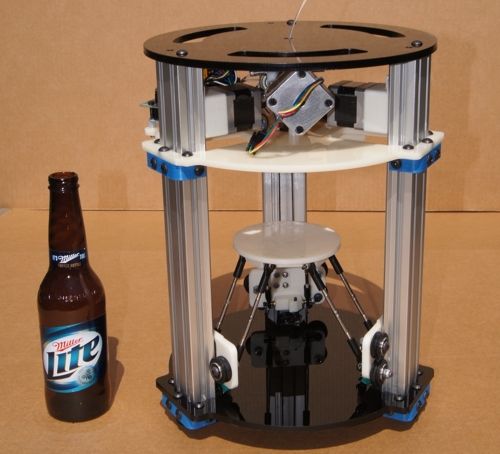 This does add a level of exclusivity to using a delta printer, almost like a yacht club for 3D printing nerds!
This does add a level of exclusivity to using a delta printer, almost like a yacht club for 3D printing nerds!
More Difficult to Learn and Troubleshoot
In addition to the construction being novel and more fun to watch, it also means the printer is harder to operate. The basic operation is the same – you load the print and watch it work. The difference is when something goes wrong, it’s a lot harder to fix it.
Cartesian 3D printers are pretty intuitive to work on and troubleshoot, but the unique style of the delta printer is difficult. Couple that with the fact that the community is smaller, and you might have some real problems while troubleshooting. This also means that assembling a delta 3D printer from a kit is more difficult.
Less Available Units on the Market
The final shortcoming of delta printers is that they aren’t as widely available as cartesian 3D printers. You’ll have to do more research to find the right delta printer for you (or just read this article).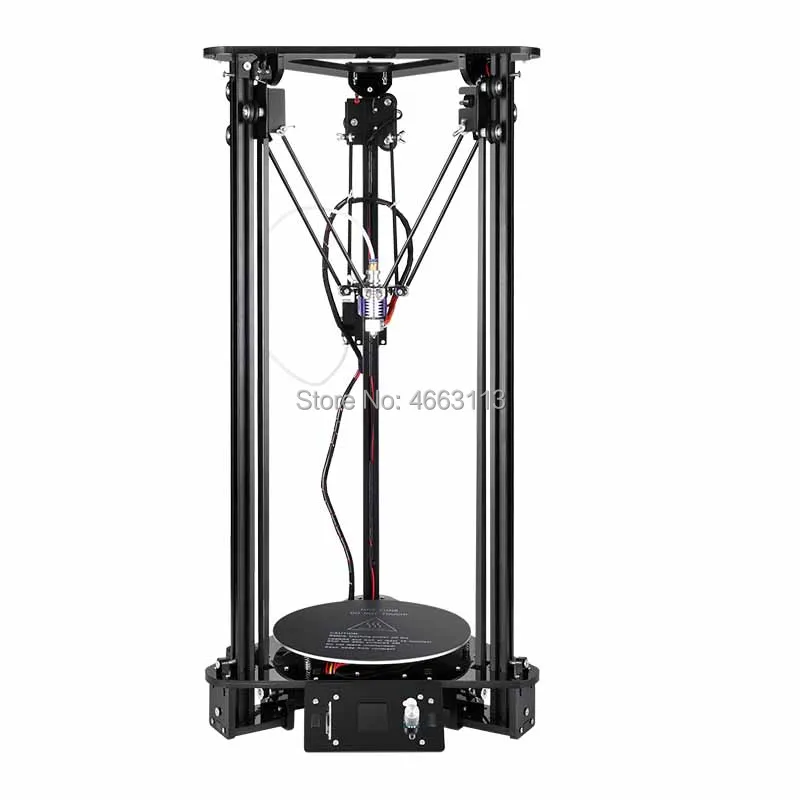
Did you know there is another type of 3D printer called a CoreXY 3D printer?
How to Choose the Right Delta 3D Printer
The big challenge is going to be making sure you pick the right delta 3D printer for yourself. There aren’t a ton of products on the market, but there are still a few key things to keep in mind. If you know what you’ll be using your printer for, consider which of these features will matter the most to you before reading on.
Build Volume
Like every 3D printer, delta printers have varying build volumes. This list has a few compact units and some units that can print massive parts. What size parts will you be printing?
Cost
Of course, each unit has a different cost associated with it. On this list, you’ll see printers ranging from under $200 to over $3,000.
Accuracy, Precision, and Reliability
Some printers focus on features or keeping the cost down, and other printers will focus on how well they print. The level of accuracy, precision, and reliability of these printers are a little different from unit to unit. As the machines get more expensive, this category tends to be more focused on.
The level of accuracy, precision, and reliability of these printers are a little different from unit to unit. As the machines get more expensive, this category tends to be more focused on.
Features
Finally, each machine offers different features.
Some will automatically level the print bed. Others will resume a print after being paused or stopped. Remember that these features have a cost associated with them, so if you don’t care for the features, it might not be worth spending the extra.
Delta 3D Printer VS CoreXY 3D Printer
Delta 3D printers are sometimes seen as competitors to CoreXY 3D printers. In a way, it makes sense. They both use less conventional mechanics to move the print head, but that’s where the similarities end.
CoreXY 3D printers make use of two stationary motors to move the print head. These motors move drive belts, which in turn move the print head.
This method’s greatest advantage is its stability. More stable movement naturally results in better print quality.
Additionally, a CoreXY system can move the print head at 45° angles, whereas regular 3D printers can only move at 90° angles. As a trade-off, however, CoreXY printers need a lot of maintenance and are prone to print failures.
As you’ve learned, delta 3D printers on the other hand use robotic arms to move the print head. This movement principle gives them blistering speed while still resulting in great print quality. The delta construction also enables very tall prints.
So, in a nutshell, CoreXY and delta aim to address two different issues. CoreXY seeks to improve stability and therefore print quality, while delta goes all in on speed.
Make your printer choice based on which is more important to you!
Conclusion
Now that you’re armed with information, you’re better equipped to pick the best delta 3D printer for you. We looked at the best delta 3D printers on the market and learned more about their features. Now it’s up to you to decide which features appeal to you the most. Hopefully, you’ll soon join the world of delta 3D printers and watch the artistry of how they work.
Hopefully, you’ll soon join the world of delta 3D printers and watch the artistry of how they work.
Pat Nathaniel
Pat is the editor-in-chief at Printing Atoms. He has a BS in Mechanical Engineering from the University of Florida and wants to spread the word on 3D printing. When he's not writing, he likes to tinker with his Ender 3 Pro, test filament brands, and scuba dive.
Delta Top 5 3D Printer Review and Buyer's Guide
The Delta printer is a type of 3D printer that is designed to perform a more systematic printing procedure. It has three arms that move up and down trigonometrically. They determine the exact location of the printhead, which is usually lightweight. This allows you to print faster than other types of printers.
Another good feature of this type of printer is that it is able to print tall models due to its natural construction and design. Models are printed on normally stationary print platforms, which ensures a more stable process.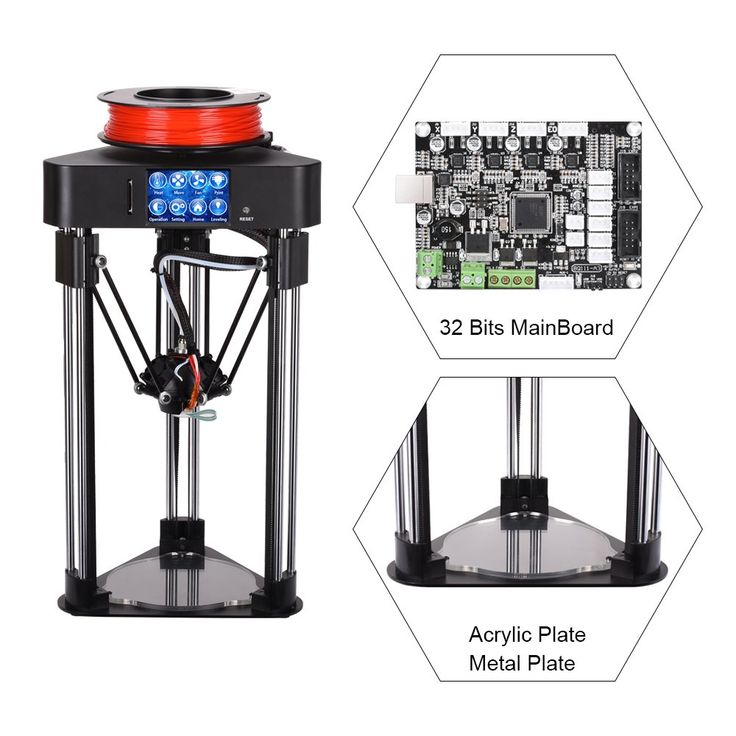
However, due to being a fast printable 3D model, they usually provide a less detailed finish. Most Delta printers also have more limited capacity when it comes to the types of fibers they can use.
Fortunately, there are many improvements and innovations in the delta 3D printer models now. We have been looking for all units that have these new upgrades that can solve the above problems.
After some tests and observations that we have made with enthusiasts and professionals in the field, we have compiled a comprehensive list and information about each of them. And to better guide you on your buying path, we've put together the best deals on Amazon for them. So, weigh each delta 3D printer we have listed and hit the buttons below.
2. 3D printer FLSUN Mini Delta
-
20-150 mm / s
-
Automatic alignment function
-
Large print size 10.
 2 x 10.2 x 14.5 dum
2 x 10.2 x 14.5 dum 3. Monoprice 121666 Mini Delta 3D printer
-
150 mm / sec
-
180 - 260 ° C Extruder temperature
-
Cuppest 110 x 120 mm 120 mm 120 mm0043
- The automatic level sensor helps to automatically level the bed.
- Has a large built-in slatted bed measuring 255 x 360 mm. Provides strong adhesion when printing.
- Most filaments such as ABS, PLA, PVA, flex, HIPS and wood can be used.
- Made of high quality metal material that is strong and stable for maximum print accuracy even at high speeds.
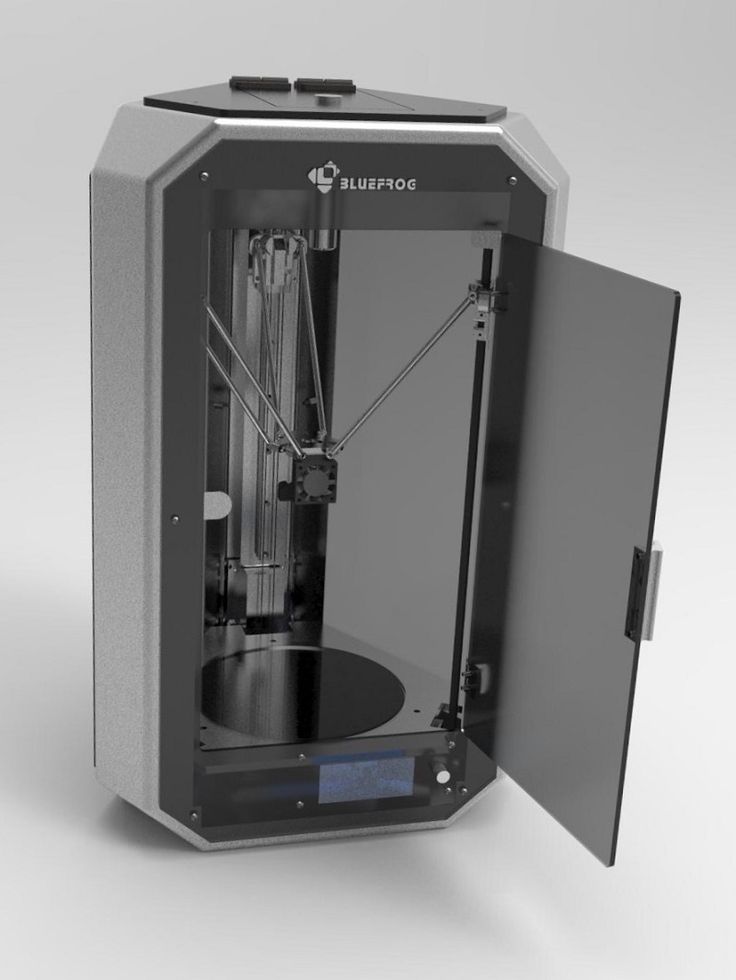
- Features a full color touch screen for ease of use.
- Effective at 24 volts.
- Supplied assembled. The rest of the parts can be quickly assembled.
- Good bed adhesion.
Cons:
- Although the model states that it only works at 50 dB, it is still quite loud.
- Frame assembly is quite thin.
Final take:
This 3D printer is designed to print at high speeds up to 300mm/s with high print precision. The hot grate stand and high quality metal material body ensure that it is stable enough to ensure quality print accuracy even at high print speeds. The printer has an auto-leveling function that makes it easy to use and saves you time. Pre-assembled by the manufacturer, and the rest of the parts are easy to assemble.
 This saves you the hassle of assembly and saves you time. It also offers a Titan extruder which provides a smoother feeding process with higher extrusion power. Finally, since it can use different fibers on the market, you have the freedom to choose among the many fibers you like for your printing project.
This saves you the hassle of assembly and saves you time. It also offers a Titan extruder which provides a smoother feeding process with higher extrusion power. Finally, since it can use different fibers on the market, you have the freedom to choose among the many fibers you like for your printing project. - Fusion modeling is used as a simple and clear printing technology.
- Supplied assembled. This saves you time on installing the rest of the parts.
- Has auto leveling function. You only align once and save the alignment data.
- Has a large print size of 10.2 x 10.2 x 14.5 inches. This allows you to print larger models.
- Can print quickly and efficiently with a recommended speed of 50mm/s.
- Has an XY positioning accuracy of 0.012mm and a Z-axis positioning accuracy of 0.
 004mm.
004mm. - Equipped with Wi-Fi function. This allows you to control the printing process even when you are away from the printer.
- Has an automatic calibration function.
Cons:
- A little labor intensive when manually leveling the bed.
- Instruction manual lacks details and useful information.
Final take:
If you are looking for a printer that prints quietly, the FLSUN Mini Delta 3D printer is the best option for you. The printer may also return to the previous print position after a power outage or unexpected power outage. You can start printing right out of the box as it comes with a Micro SD and test filaments. The extrusion temperature is 240-260°C. The printer can also continuously heat the bed up to 100°C for 48 hours. So if you're going to be using it for large print projects that could take all day, this is the perfect option.
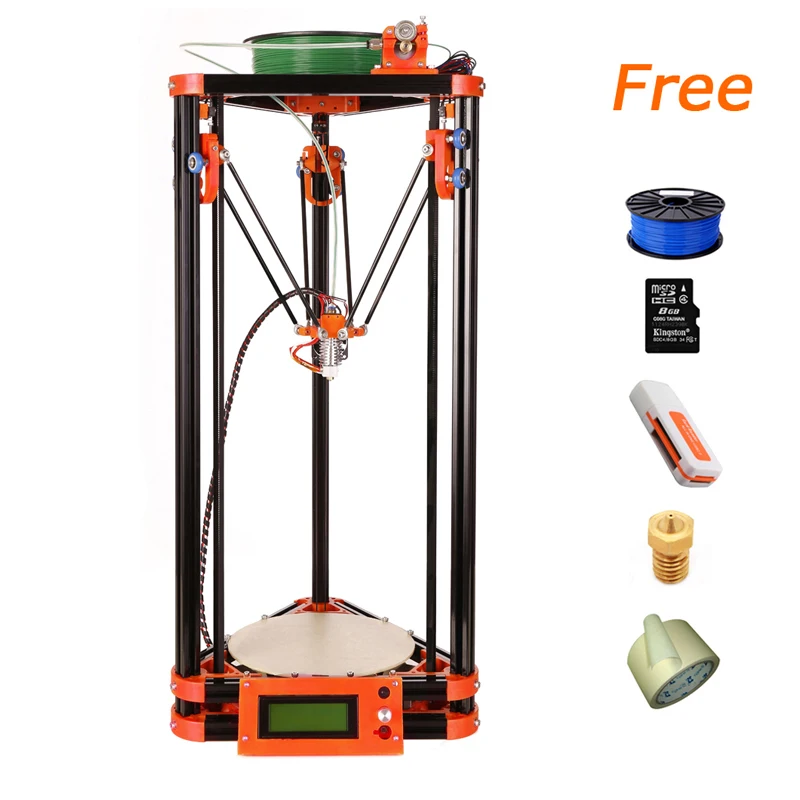 Finally, the aluminum material that the printer body is made from makes it more stable when printing and ensures that it will serve you effectively for a long time.
Finally, the aluminum material that the printer body is made from makes it more stable when printing and ensures that it will serve you effectively for a long time. - The extrusion nozzle and print platform can withstand a wide range of temperatures.
- You can print directly from your computer or laptop via Wi-Fi, USB connection or offline microSD card.
- Automatic calibration. This ensures that you will not have any problems leveling the bed.
- Supplied fully assembled for ABS and PLA.
- Has a high print speed up to 150mm/sec.
- Extruder nozzle temperature ranges from 180 to 260°C and up to 60°C for the build plate.
- Has a build area of 110 x 120 mm.
- Has a free microSD card loaded with 3D printable models.

- Provides layer resolution down to 50 microns.
Cons:
- Small printing area.
- The surface of the bed is rather rough, making it difficult to clean.
Final take:
This delta 3D model is undoubtedly one of the best 3D printers you should consider. It has a solid construction, as it consists of a steel frame and an anodized aluminum body. The temperature ranges of both the extruder with nozzles and the print platform ensure that you can work flawlessly with ABS and PLA fibers from different manufacturers. The auto-calibration design also ensures you have an easy bed leveling time that won't take up much of your time. The package also comes fully assembled, so you just need to unpack it and you can start printing with a reloaded MicroSD card loaded with sample 3D printable models.
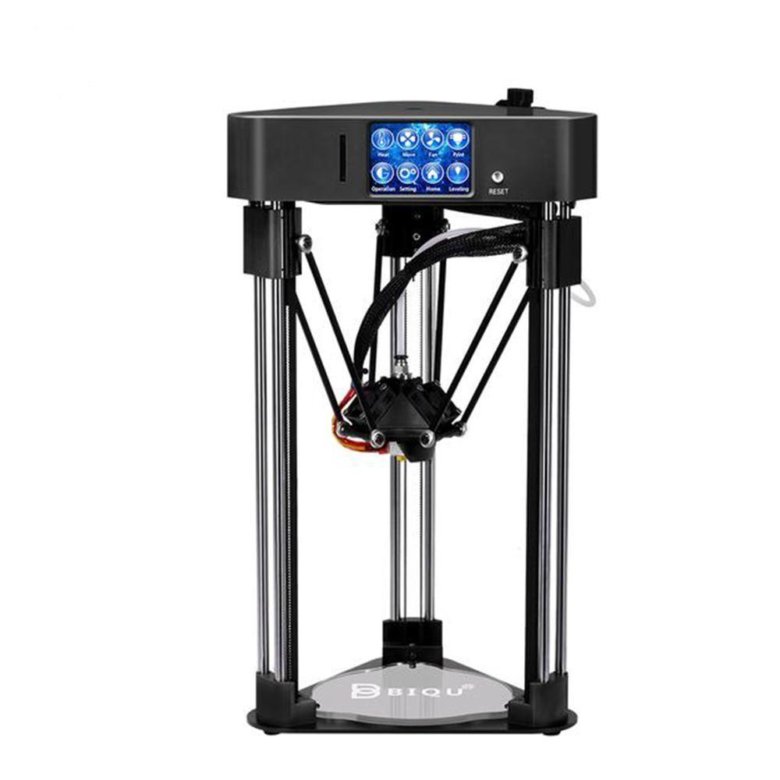 It also has great potential for upgrades. So if you love customizing your car, you better have this one.
It also has great potential for upgrades. So if you love customizing your car, you better have this one. - Supplied fully assembled. This will save you more printing time.
- Features a touch screen interface for easy operation and parameter setting.
- Equipped with auto leveling function.
- Allows you to create larger models due to the large construction volume of 270 x 300 mm.
- The extruder is heated to a maximum temperature of 310℃.
- Produces very low noise levels of less than 50 dB.
- Low filament sports sensor.
Cons:
- Not suitable for beginners.
- Although it has an auto level feature, you still need to calibrate the high limit sensors before use.
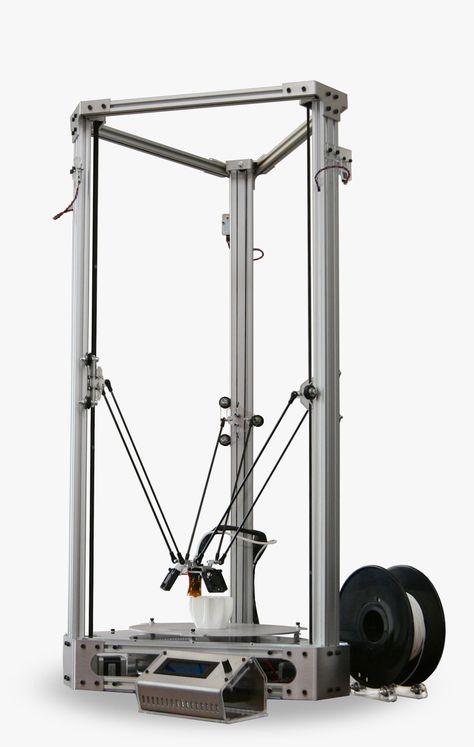
Final take:
Monoprice 130993 Pro 3D is designed for beginners and professionals. It has a solid and durable construction to ensure you get great prints with it every time. It is also equipped with a glass plate which ensures printing precision. In addition, it is equipped with automatic PID control, which ensures that the printer is constantly heated during printing. Also, fairly reliable parts: the machined actuating plate, magnetic actuating arms and machined parts are all Japanese and Taiwanese components. The 32-bit ARM processor is great and can run comparatively faster than most brands of printers. Also quite detailed at 50-300 microns.
- Can be connected to a Wi-Fi network.
- Has a nozzle temperature up to 250℃.
- Has a print size of 150 x 150 x 175 mm.
- Printing speeds up to 150 mm/s possible.

- Can print from iOS, PC, Mac, or the included Micro SD card.
Cons:
- The spool holder on the top of the printer is very small.
Final take:
If you're an amateur and want to create fun 3D prints, then you should consider the Frankensbox 3D printer. It's easy to use as it's ready to print right out of the box. What's more, it comes pre-installed with a port for USB, Wi-Fi and Micro SD. It allows you to easily connect to your PC or laptop and start printing. Despite its small size, it produces high quality prints. Children can use it at home as it is safe and fully enclosed, stops when the door is opened or power outages, and resumes printing when the door is closed or power is restored. It also makes it easy to extrude filaments because its extruder uses high temperatures efficiently. At 250°C, it can melt filaments and print your model at 150mm/s.
Check Price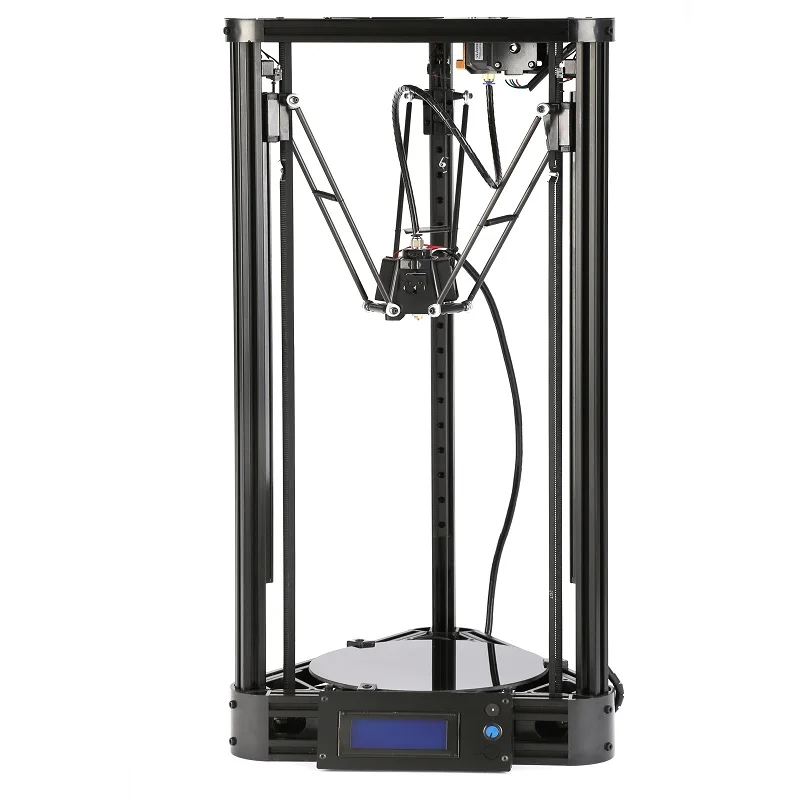
Delta printer
Reviews
Follow author
Subscribe
Don't want
4
FLSUN 3D Metal Frame Kossel Delta Kit Anycubic Kossel linear plus FLSUN 3D Metal Frame Large Print Area 3D Printer
The Delta Printer is a 3D printer with Cartesian kinematics (Delta - kinematics) operating in the XYZ coordinate system. They differ from counterparts with other types of kinematics, higher printing speed, a fixed platform, which avoids “wobble” and the likelihood of distortion, and a large print height along the Z axis due to the vertical arrangement of the rails.
Anycubic Kossel and Anycubic Prediator, very popular in the Russian market, were discontinued and Anikubik did not offer any alternative. But to the delight of fans of fast and beautiful 3D printing, a young and successfully developing Chinese company FLSUN from Shenzhen took advantage of this and offered the market a line of 3D printers Delta .
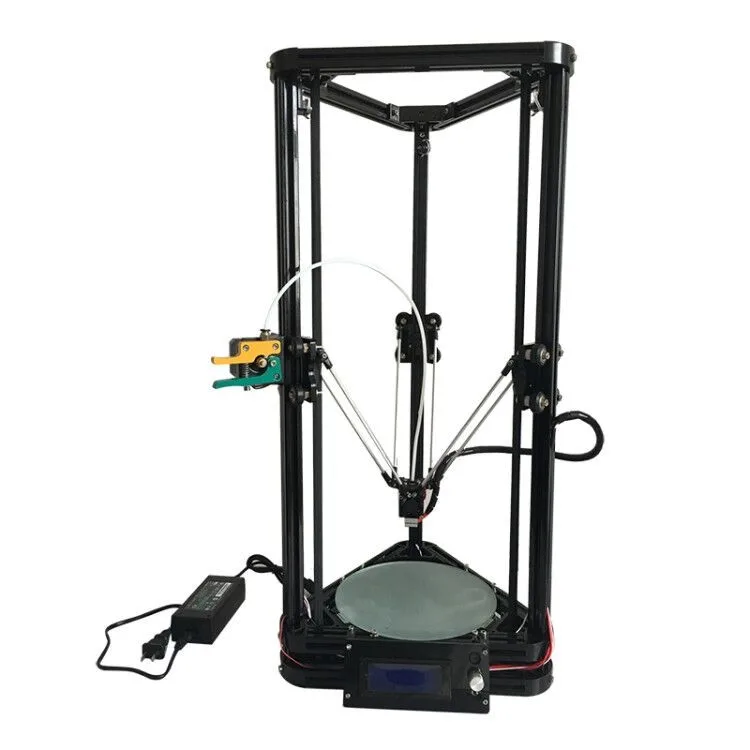 In the sale of the 3DSN store there are models from a warehouse in Russia and on order, wholesale lots.
In the sale of the 3DSN store there are models from a warehouse in Russia and on order, wholesale lots. - Budget Delta Printer - 3D printer Flsun Q5 Delta (Kossel)
Compact budget Delta 3D printer with a modular structure. It has simple assembly, maintenance and convenient operation.
Ø 200 x 200 mm build area
Auto leveling
32 bit motherboard with TMC2208 drivers
High speed 3D printing up to 120mm/s.
- 3D printer Flsun QQ S PRO Delta Kossel
The FLSUN QQ S PRO 3D Printer (Delta Kossel) is an affordable delta 3D printer offering a fairly large build volume of 255 x 365mm in diameter and easy to use features such as automatic bed leveling and the ability to remotely control the printer via Wi-Fi connection. -Fi.
Working chamber Ø 255x365 mm
Nozzle working temperature - up to 270 ℃
Heating table temperature - up to 110 ℃
Automatic leveling
Noise level 50 dB
Feeding system: Bowden drive
Filament diameter: 1.
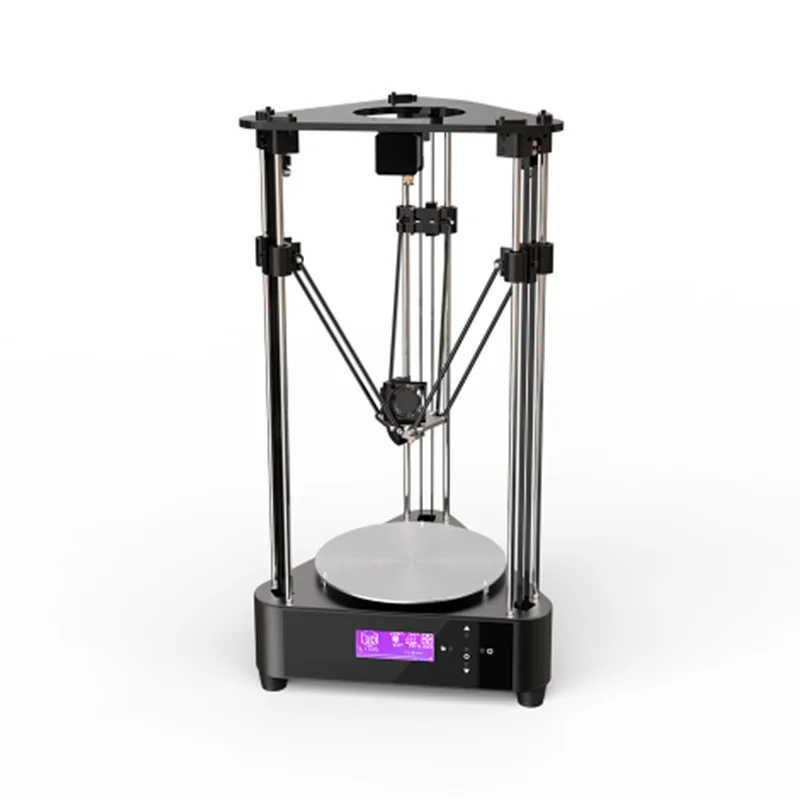 75 mm
75 mm Nozzle diameter: 0.4 mm
Interface: SD card, Wi-Fi, USB
Size: 286x348x0703 mm
Weight: 13 kg. Equipped with linear rail guides. Glass coated with a special layer for better adhesion.
Construction material: aluminum alloy 6063
Nozzle temperature: ≤ 240℃
Table temperature: ≤ 100℃
Leveling type: automatic
Motherboard: 32bit
-150mm/s Print speed:0 with
Maximum idle speed: 300 mm/s
Extruder cooling: double fan
Print size: 260x330 mm
Printer size: 440x390x960 mm
Package size: 88x42x20.5 cm0003
Weight: 16.5 kg
More interesting articles
56
Follow author
Subscribe
Don't want
As I start this review, I'm already anticipating a dozen comments about how hard life is for 3D peasants, and how...
Read more
one
Subscribe to the author
Subscribe
Don't want
In this article we will tell you about FlashForge Adventurer 3 Pro - what is so "professional" and.
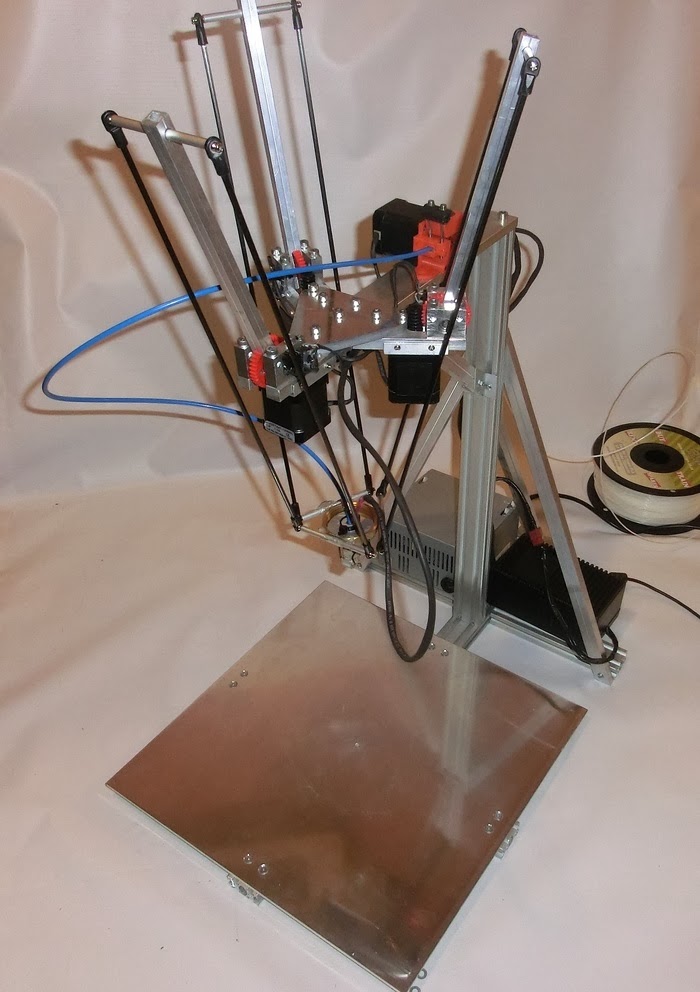
Learn more
-



